Description
Details
LAVENDER
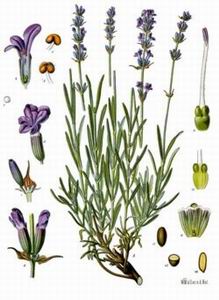
Latin Name: Lavandula angustifolia/officinalis/vera
Plant/Part: Shrub/Flowers (Source : England, France and Yugoslavia)
Family: Lamiaceae (Labiatae)
Extraction: Steam Distillation
AROMA: Floral, light and clear with woody undertones.
PROPERTIES: What a great aroma! Lavender is the most versatile of essential oils. It is relaxing and refreshing, uplifts the spirits, and helps to relieve the distress of muscle pain. NO home should be without it. Balances your body and mind. Calms or stimulates according to your bodies needs. Excellent for refreshing tired muscles, feet and head. Add a drop to the pillow/sheet before peaceful sleep. Treats burns and reduces scaring. Can be used neat in small amounts on burns, but care still needs to be taken. Has a sedative action on the heart and will help to bring down high blood pressure and calm palpitations. Long known as giving effective relief from insomnia. It is renowned as an insecticide so keeps moths and insects at bay. Also said to cleanse dog bites and Purify the air.
CHEMICAL CONSTITUENTS: Linalol, Linalyl Acetate, Lavandulol, Lavandulyl Acetate, Terpineol, Limonene, Caryophyllene.
PRECAUTIONS: Some people with low blood pressure may feel a bit dull and drowsy after using this oil. It is an emmenagogue too, so best avoided in the early months of pregnancy.
BLENDS: Bay, Bergamot, Chamomile, Citronella, Clary Sage, Geranium, Jasmine, Lemon, Mandarin, Nutmeg, Orange, patchouli, Pine, Thyme, Rosemary.
Of all the essential oils, that of Lavender is undoubtedly the most versatile, with a spread of properties ranging from analgesic, via antidepressant, antiseptic, bactericidal and decongestant, to hypotensive, insect repellent, sedative and vermifuge. The properties can, however, be best summed up as calming, soothing and, above all, balancing. Perhaps the most important property of lavender oil is its ability to restore unbalanced states – whether of mind or body – to that state of balance in which healing can take place.
The versatility of the plant mirrors its complex chemical structure. The active constituents of the oil include the ethers of linalyl and geranyl, geraniol, linalol, cineol, d-borneol, limonene, 1-pinene, caryophyllene, the esters of butyric acid and valerianic acid, and coumarin. The proportion of the various constituents will vary from place to place, according to the soil and conditions in which the plants were grown, and from year to year according to the weather conditions. For example, after a dry and hot summer, the oil will have a higher proportion of esters than after a dull one, and Alpine Lavender is always higher in esters than plants grown at lower altitudes.
Lavender has been in use continuously for thousands of years, either in the form of the essential oil, or as the fresh or dried flowers. Where some of the medicinal plants known to ancient civilisations fell out of use, only to be ‘rediscovered’ in recent years, lavender has never lost its popularity. It is one of a small handful of essential oils which can still be bought in chemists shops.
The name of the plant derives from the Latin ‘lavare’ – to wash, probably from its use in cleansing wounds, although it was also widely used for personal bathing.
There are several varieties of lavender in cultivation which are of use medicinally, and confusion sometimes arises over the names of the various species. The ‘common’ Lavender, or Lavan-dula offidnalis, which is the most important medicinally, can also be called Lavandula augustifolia, or Lavandula vera, meaning ‘true lavender’. This is the most delicately scented Lavender, and the one we associate with lavender water, and the bags used to perfume clothes and linen, and keep moths at bay. The Lavandula spica varieties (Spike Lavender) have a more camphorous smell, and are useful for respiratory problems.
Lavender is a native of the Mediterranean. It flourishes all over Europe, since the Romans introduced it to Britain and other Northern European lands, but the best Lavender is still that grown in its original home, around the Mediterranean. The finest quality grows at altitudes between 700 and 1,400 metres.
It was Rene Maurice Gattefosse’s observation of the dramatic healing effect of lavender oil when he burnt his hand in a laboratory accident, that led him to research essential oils in greater depth, and eventually to coin the word ‘aromatherapie’. Dr. Jean Valnet used Lavender oil to treat serious burns and war injuries when he was a French army surgeon. Lavender is both antiseptic and analgesic, which makes it an ideal choice for treating burns and all kinds of injuries. It also promotes rapid healing, and helps to prevent scarring.
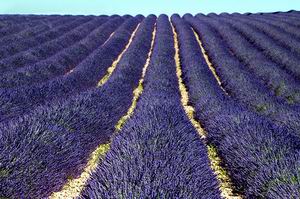 The analgesic, antiseptic and antibiotic properties of Lavender oil also make it a valuable treatment for colds, coughs, catarrh and sinusitis, as well as ‘flu, the most effective form of treatment being a steam inhalation (q.v.) Steam alone – as hot as you can bear it without risking scalding your throat — is an effective anti-viral agent, and with oil of Lavender added, it can soothe, decongest and attack the bacteria which cause secondary infections, leading to catarrh and sinusitis following colds or ‘flu. Lavender is also an effective sedative, so such an inhalation, used last thing at night, will aid sleep, and this in itself will help recovery. A little oil of Lavender (neat) can be massaged into the throat to relieve a tickly cough. The sedative action of Lavender will calm the tickle, and the warmth of the body will release some of the volatile oil to be breathed in, and this will work on the cause of the cough – the infection in the respiratory tract. A drop or two can be massaged in the same way along the bony ridges of the eyebrows and on either side of the nostrils to help catarrh. In doing this, you will be working on some important acupressure points for catarrh, as well as using the decongestant and antibacterial action of the Lavender.
The analgesic, antiseptic and antibiotic properties of Lavender oil also make it a valuable treatment for colds, coughs, catarrh and sinusitis, as well as ‘flu, the most effective form of treatment being a steam inhalation (q.v.) Steam alone – as hot as you can bear it without risking scalding your throat — is an effective anti-viral agent, and with oil of Lavender added, it can soothe, decongest and attack the bacteria which cause secondary infections, leading to catarrh and sinusitis following colds or ‘flu. Lavender is also an effective sedative, so such an inhalation, used last thing at night, will aid sleep, and this in itself will help recovery. A little oil of Lavender (neat) can be massaged into the throat to relieve a tickly cough. The sedative action of Lavender will calm the tickle, and the warmth of the body will release some of the volatile oil to be breathed in, and this will work on the cause of the cough – the infection in the respiratory tract. A drop or two can be massaged in the same way along the bony ridges of the eyebrows and on either side of the nostrils to help catarrh. In doing this, you will be working on some important acupressure points for catarrh, as well as using the decongestant and antibacterial action of the Lavender.
Massaged into the temples, Lavender will relieve many forms of headache. If this alone does not help, a cold compress of Lavender can be placed on the forehead or back of the neck.
One of the most important uses of Lavender is for the relief of muscular pain, whatever the cause. It is best used in a massage oil, either alone or preferably blended with another oil, such as Bergamot, Marjoram, Rosemary, etc.; for Lavender is not only enhanced in its action by being mixed with other essential oils, but also heightens the action of any oil with which it is mixed. If I here is nobody available who can give massage, an aromatic bath with Lavender will also give an enormous amount of relief to muscular pain following exercise, or arising from tension, etc. Low back pain can be helped in this way, providing it is first established that the pain is muscular in origin, and does not arise from any spinal irregularity (it is as well to have this checked by in osteopath or chiropractor before undertaking treatment). The same methods can be used to relieve the pain of rheumatism, sciatica, arthritis, etc., because of the multiple action of Lavender oil in reducing pain locally, lowering the reaction to pain of the central nervous system, reducing inflammation and toning the system generally.
Lavender is also valuable in reducing menstrual pain or scanty menstruation, either massaged gently into the lower abdomen, or made into a hot compress. It is used as a vaginal douche for leucorrhoea in a very low concentration – l/2% to 1% in boiled and cooled water. During labour, Lavender will both reduce pain and strengthen contractions, thus speeding labour, if it is massaged into the lower back (a useful job for the expectant father). It can also be used as a compress or massaged gently into the abdomen to help with the expulsion of the afterbirth.
Lavender can help with many of the minor upsets of infancy, too – colic, irritability and childhood infections – provided it is borne in mind that only very low dilutions should be used. A very small amount of Lavender oil in a baby’s bath will help a fretful infant to sleep. Dilute the oil first, either in a little almond oil or a few teaspoons of vodka, for, as oil and water do not mix, the essential oil will float in a fine film on top of the water. With young babies, there is a danger that if they get a little undiluted oil on their fingers, they may rub it in their eyes, causing irritation and possible permanent damage to the cornea.
The action of Lavender on the muscle of the heart is both tonic and sedative, making it valuable for the treatment of palpitations, etc., and it also helps to reduce high blood-pressure, though it is obviously necessary to look at the diet, life-style, etc of the sufferer, too. Massage or aromatic baths (not too hot) will be the most suitable mode of use.
The soothing, antiseptic and anti-inflammatory properties of Lavender make it valuable for many skin conditions, and its delicate and well-loved aroma lends itself well to blending in creams, lotions, skin tonics, etc., in concentration of 1% to 5%. Very few people show any allergic reaction to Lavender, and in my experience they are often asthma or hay fever sufferers, or have a family history of allergies (hay fever, asthma, eczema or other skin reactions). Fortunately, these people often seem to have their own ‘early warning system’ and will express a strong dislike for the smell of Lavender, which is in most instances one of the best-loved perfumes of all. Always heed an expression of dislike for the smell of ANY oil ~ it will often indicate that it is not to be used for that person.
Lavender is one of the most valuable oils for the treatment of acne, most often in combination with Bergamot. It inhibits the bacteria which cause the skin infection, while soothing the skin, helping to balance the over-secretion of sebum, which the bacteria thrive on, and helping to reduce scarring. Lavender is one of the two essential oils which most powerfully stimulate the growth of healthy new cells – Neroli is the other, although all essential oils share this property to some extent. Lavender will also help many cases of eczema, although Chamomile or Melissa may be the first choice of oil in some cases. All three of these oils share the qualities of being calming, soothing and antidepressant, so they act on the emotional factors which so often underlay the physical manifestation of eczema.
The insect repellent and insecticidal properties of Lavender have been used for many centuries to protect clothes and household linens from moth and other small pests, and to delicately perfume the linens at the same time. It has long been used to freshen rooms, both in pot pouris, and as bowls of dried flowers. Lavender oil (perhaps mixed with Bergamot or Lemon) applied to the skin will help you to avoid being bitten by mosquitoes, midges and other insects, but if you should get bitten or stung, a little of the neat oil, applied as soon as possible to the skin, will take the pain out of the sting, and help to stop the irritation spreading and infection entering at the puncture point. The oil can also be used to help keep animals free from fleas, and to treat infestations of head-lice. It is also used in treating scabies – once found only in rural areas (where the minuscule parasite is harboured by sheep in their wool) but now occurring increasingly in towns. Lavender is fungicidal, too, and valuable in treating such infections as athlete’s foot and ringworm (see also MYRRH AND TEA TREE).
On the psychological plane the actions of Lavender can be seen to ‘mirror’ many of its physical effects. Because of its primarily balancing nature, it is of great value in helping people who are in tin unbalanced emotional state – hysteria, manic depression or widely fluctuating moods. Massage of either side of the spine with Lavender can help profoundly in such situations, and here the physical touch of the therapist is also a very important part of the healing process. Lavender baths are also very useful – both between treatments and as a very valuable and effective form of sell-help. People who are depressed and/or anxious will benefit from using Lavender in the bath, particularly at night. Insomnia is one of the states for which Lavender is the supreme choice of essential oil, whether the causes are physical discomfort or mental stress, anxiety or an over-active brain at night. While an aromatic bath is probably the very best method of use, a few drops of the oil on a hankie, or on the pillow case can also be very effective. One or two drops on a nightie or pyjamas will often soothe a sleepless child.
From the aesthetic point of view, Lavender blends well with many other oils, particularly some of the other flower oils, such as Geranium, and with citrus oils such as Bergamot; also with some of the other members of its own plant family – the labiatae – such as Marjoram and Rosemary. It blends less well with the more exotic oils, such as Sandalwood, Jasmine, etc.
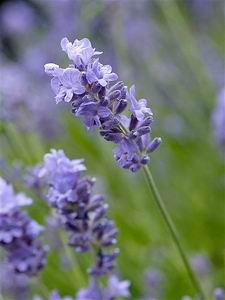
The very versatility of Lavender oil arouses suspicion in some people, particularly if they are accustomed to the allopathic idea of specific drugs for individual diseases or symptoms, so it is worth mentioning again that its great variety of uses is, to a certain extent, related to the chemically complete
x structure of the oil and its numerous active constituents. The other, and perhaps more important, point to remember, is that the action of Lavender is primarily balancing and normalising, and this is why it can be used in so many different contexts

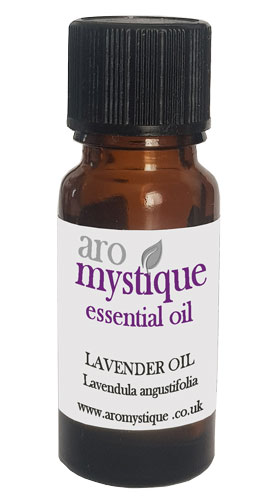
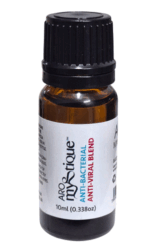

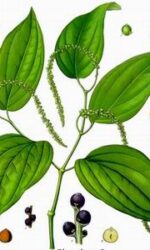
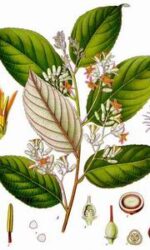
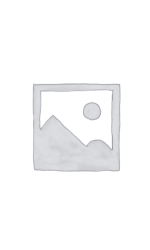
Reviews
There are no reviews yet.